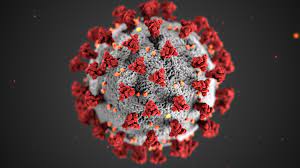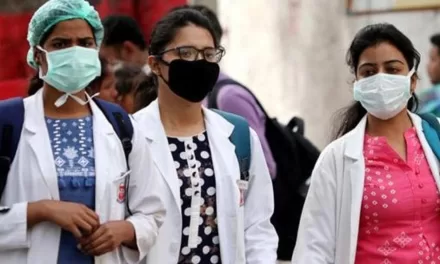
The rapid ascent of the JN.1 lineage, a descendant of the Omicron variant, is significantly contributing to the current surge in winter wave COVID-19 infections worldwide. Initially identified in Luxembourg in August, this variant has swiftly spread across approximately 41 countries, including India, prompting the World Health Organization (WHO) to classify it as a distinct Variant of Interest (VOI) apart from its parent lineage, BA.2.86.
Acknowledging the escalating transmission rates of JN.1, the WHO expressed concerns regarding its potential to amplify respiratory infections globally, intensifying the burden on numerous countries.
India, grappling with an upsurge in infections, witnessed a concerning spike with 752 new coronavirus cases reported in a single day, marking the highest surge since May 21, 2023, according to data from the Union Health Ministry. Among these cases, 22 instances of JN.1 have been detected in the country, with 21 cases from Goa and 1 from Kerala as of December 21.
JN.1 stands as a derivative of BA.2.86, notable for its L455S mutation within the spike protein, which renders it more transmissible than its predecessor. However, no distinctive or novel symptoms attributable to this variant have been reported thus far, with documented symptoms primarily resembling upper respiratory tract infections.
The US Centers for Disease Control and Prevention (CDC) highlighted that the symptomatic variations caused by different COVID variants are contingent upon individuals’ immune responses and overall health status rather than the specific variant responsible for the infection. Dr. Dipu T.S., an Associate Professor at Amrita Hospital in Kochi, outlined common symptoms associated with JN.1, including fever, cough, fatigue, nasal congestion, runny nose, diarrhea, and headaches.
Amidst the circulation of other respiratory illnesses such as influenza and RSV, distinguishing between symptoms hinges on specific diagnostic testing for COVID versus alternate infections, as indicated by Jonathon Mellor from the U.K. Health Security Agency.
In the United States, CDC estimates reveal that JN.1 accounts for 44% of current cases. The CDC remains vigilant, stating that the continued proliferation of JN.1 implies heightened transmissibility or potential evasion of immune responses compared to other circulating variants. However, the full extent of its impact on infection rates or hospitalizations remains uncertain at this early stage.











